Windmills to Wineries -
The Coast of Western Europe
In late September 2022, wife Patricia and I flew to Amsterdam to commence a fourteen-day cruise touching at many ports along the western European coastline, with a few bonus stops.
Our ports of call: London, Bruges (we visited Ghent), Paris (from Le Havre), Dublin, Cork, Bordeaux, Santander (Spain), Gijón (Spain, from which we visited Oviedo and Aviles), Vilagarcia de Arousa (Spain, from which many passengers visited Santiago de Compostela, the end of the Camino de Santiago pilgrimage trail), and Oporto (Portugal, famed source of great vintage ports), and finally Lisbon (Portugal, from which we flew home).
A key factor in our trip was my back and pelvic pain, that at best slowed us down on excursions, and at worst led to cancellation of excursions that appeared likely to be too demanding. My days of adventurous photography are no doubt limited going forward. I’m pleased with the photos offered here, but they do not compare well with the best of previous photographic adventures.

Construction cranes created a sculptural tableau against the sky, I thought, as we cruised up the Thames from our ship's mooring in Tilbury.

"The Shard" (London's tallest building) and one tower of Tower Bridge, as seen from the Thames.
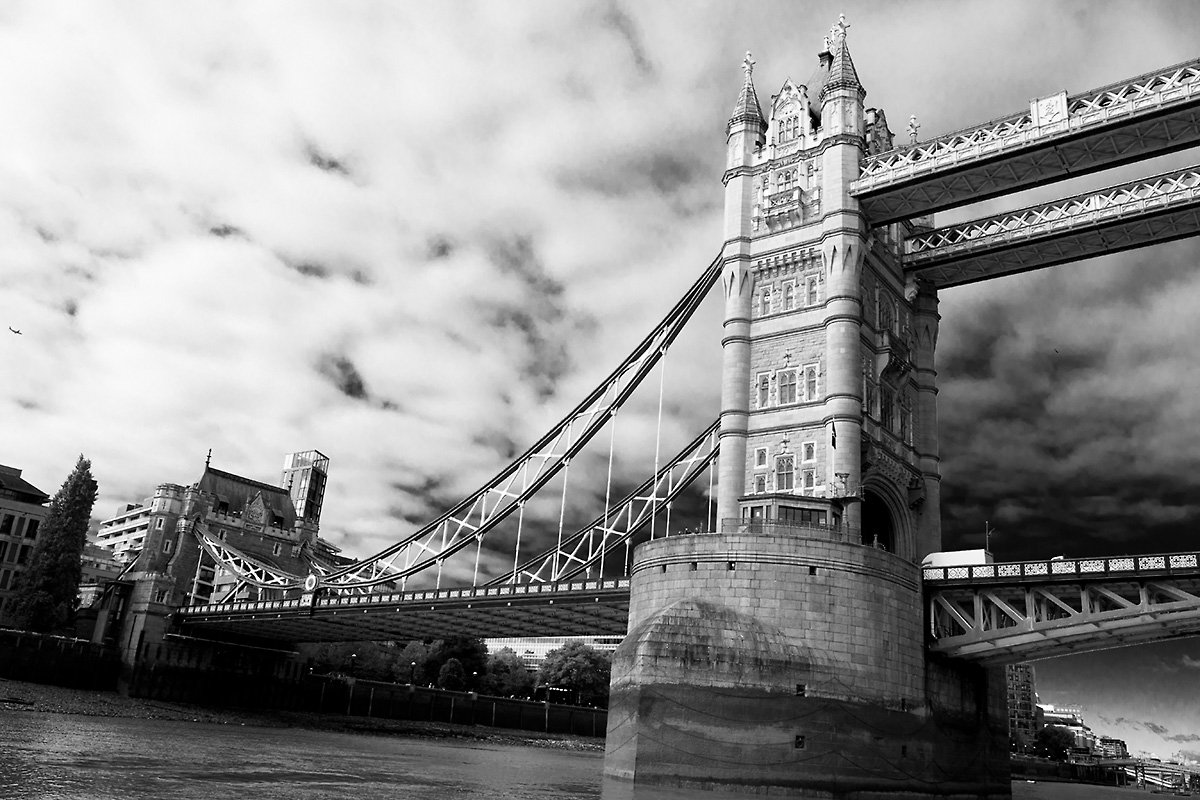
A closer view of Tower Bridge.

"The Punch and Judy," where we had lunch in Covent Garden (lower level). My fish and chips were average in quality, although the cod was enormous; Patricia's breaded shrimp balls ... well, she'd just as soon forget them.
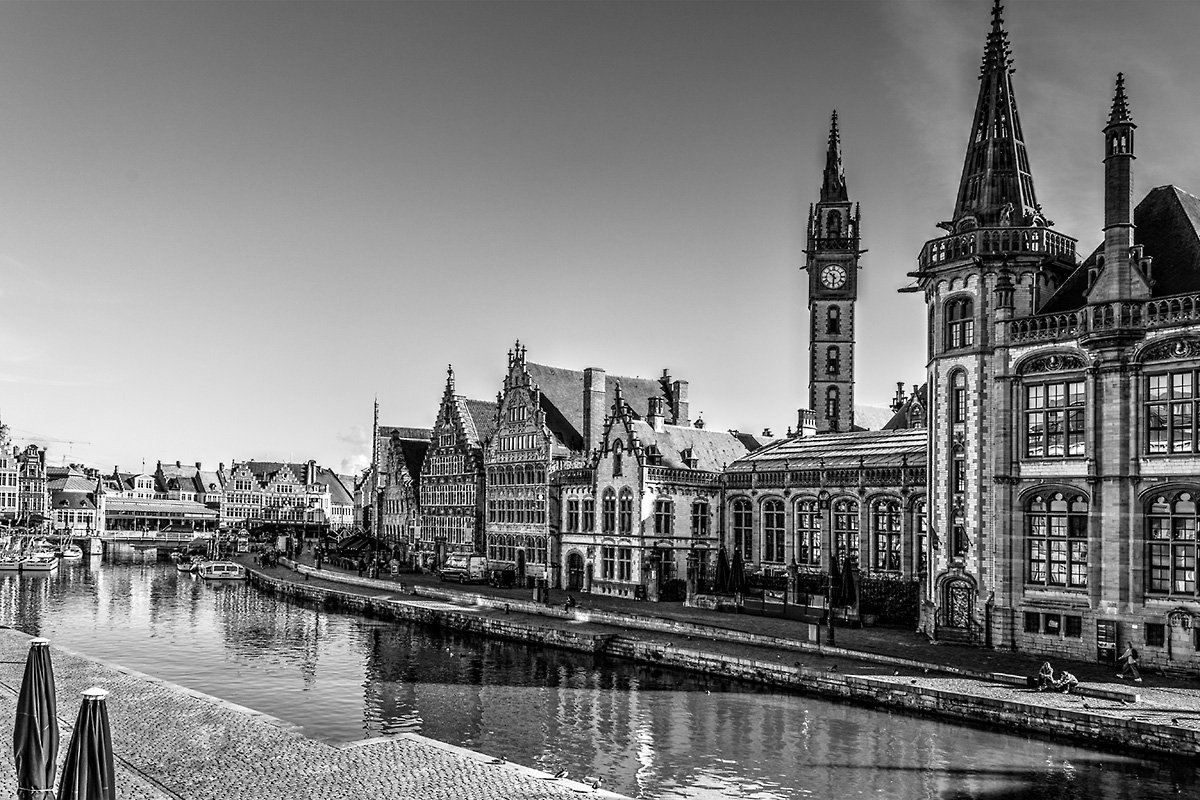
A view of prominent buildings of Ghent roughly across from the downtown Marriott, along the Leie River.

Closeup of a detail on one of the Ghent buildings (note that the angel holds a sundial). The Ghent excursion was the only time this trip I took my 28-300mm long lens -- because the combined weight of lens and camera body being five pounds, it brings on extreme back pain when I carry it too long.

An energetic approach to the Ghent canals ...

... or a more sedate viewpoint on the banks.

A very fancy facade on this Ghent multi-storied building on the Graslei (street) along the canal.

The Gravensteen, a preserved 10th-century moated castle with an armory museum, as seen from our canal boat.

As we passed going up the canal, this gentleman was walking slowly paralleling our line of travel, and then when we returned, he was settled, now enjoying the constant traffic on the water.

We opined it must have been near the first day of school, as hordes of school children of all ages were constantly in and out of canal boats.

An area adjacent to a prime boat loading ramp, but for some unexplained reason not used today.
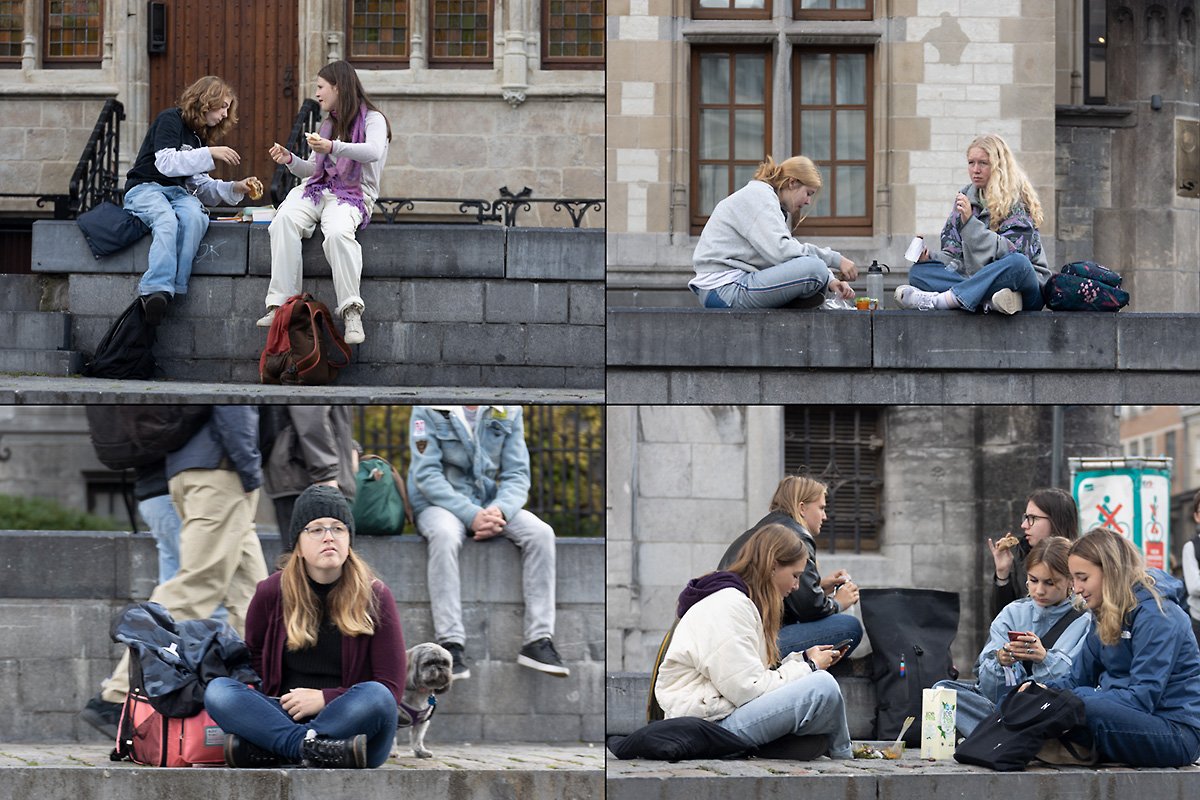
A montage of luncheon breaks along the canal
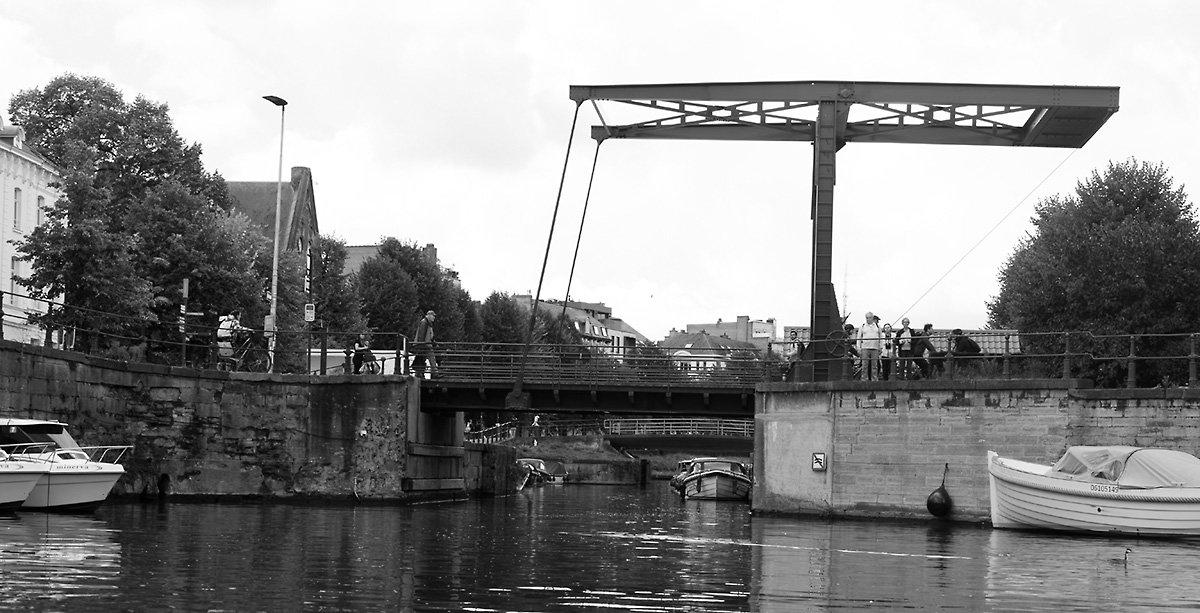
A famed style of drawbridge, also seen in the Netherlands.
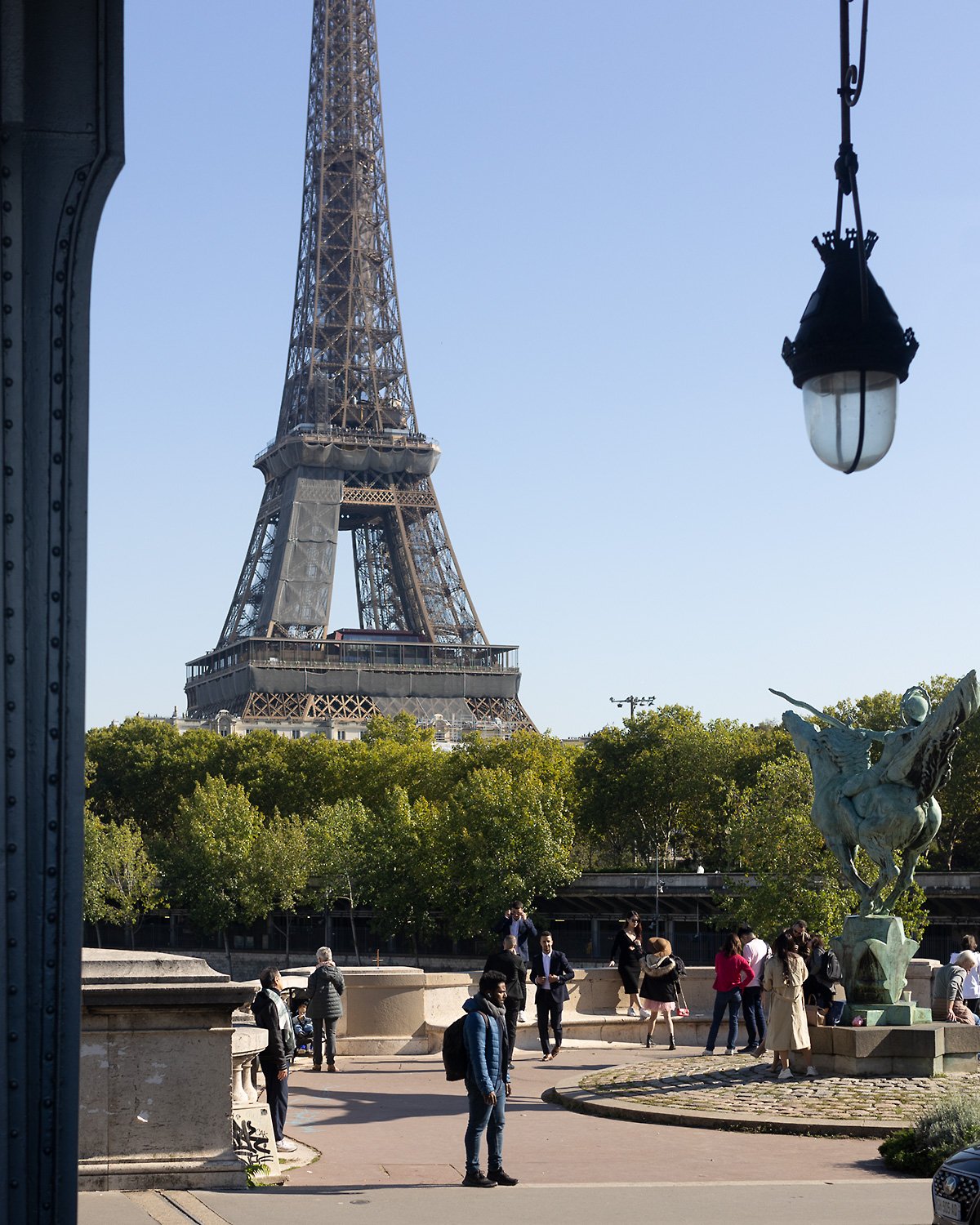
I rarely photograph through a bus window. As we crossed the Seine, I thought this view merited an exception.

Fresh produce! Of all varieties, although the chanterelles appealed to me most. Our visit to the famed Marché d’Aligre (a massive market in Paris), although tantalizing, was cut short because of our late arrival -- the fault of our tour guide. I was extremely pissed!
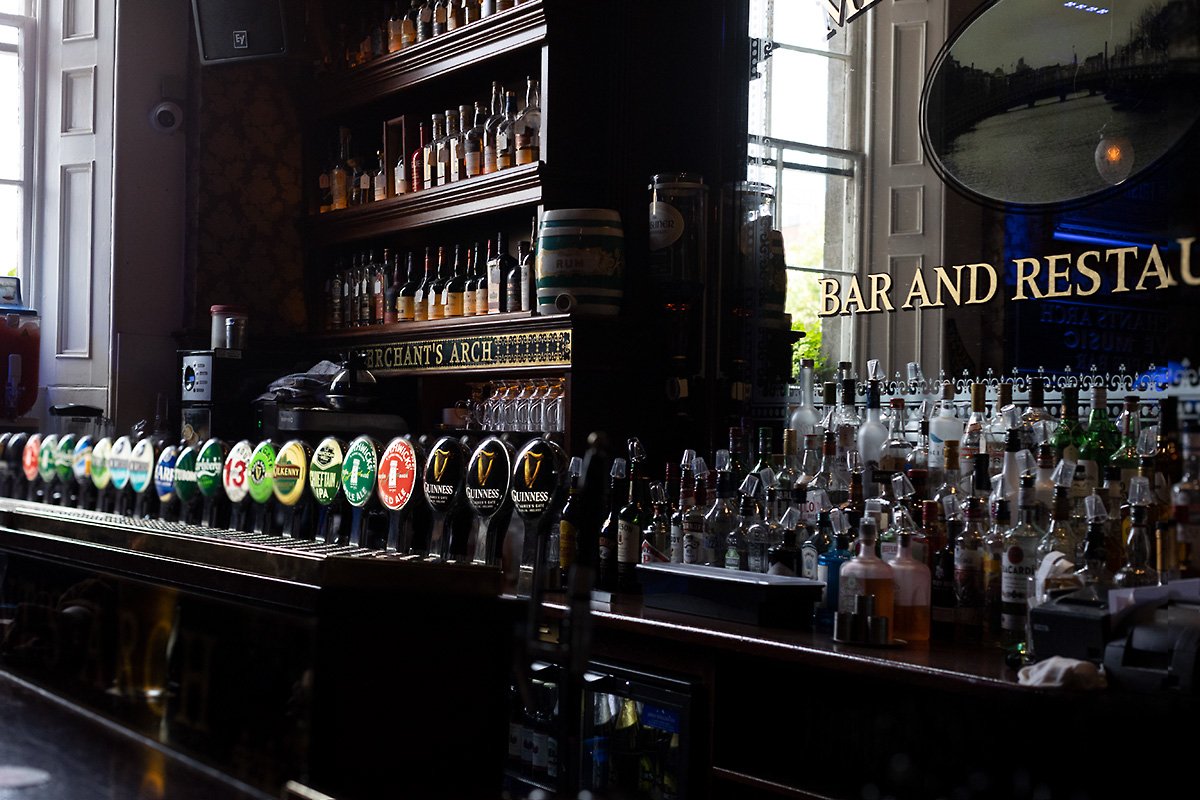
In Dublin (note our path to date: Amsterdam, then London, then Ghent, then Paris, and now Dublin) we ate lunch in this tightly packed and beer and stout-festooned "The Merchant's Arch" Bar and Restaurant. It's apparently a popular spot with locals and tourists. I was tickled by the three taps for Guinness, with only one allocated to each of the other offerings. Patricia and I each had a Guinness, which was lovely.

The Merchant's Arch (Dublin) as seen across the River Liffey.

In Cork we drove across Irish countryside -- with malls, industrial complexes, tightly-packed housing tracts, along with pastoral scenes of Irish beauty -- to the village of Kinsale, on its cozy harbor abutting the Celtic Sea. The excuse was tea and scones in The Lord Kingsale, although as this photo shows it was usually a popular pub. I was surprised to see the Coors tap. A bit of research, however, showed that Molson Coors was a very prominent and well-distributed Irish brewer. We then walked through Kinsale -- disclosing the real reason for the visit: to encourage commerce with the local merchants.

This and the following five photos show Kinsale shops, photographically attractive for their vibrant colors. This and two other photos -- each identified -- were taken and processed using High Dynamic Range (HDR) technology.

HDR


HDR


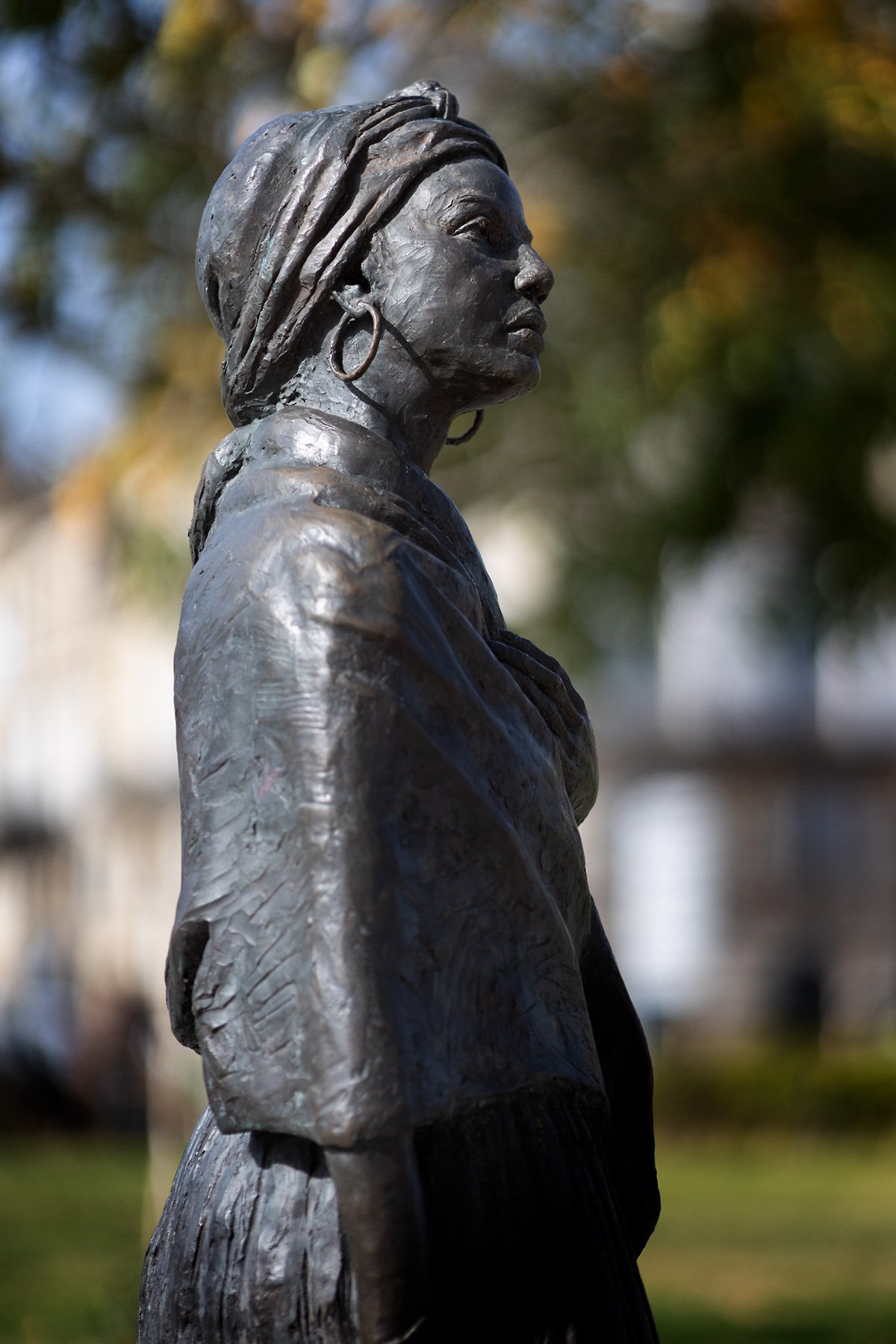
Statue on the wharf opposite our ship in Bordeaux: Marthe Adelaide Modeste Testas was a former slave in Haiti. The plaque accompanying the statue reads (forgive the absence of French accent marks): "Born in 1765 in East Africa, Al Pouessi was captured with her mother when she was young, during a raid. She was bought sometime between 1778 and 1781 by Pierre and Francois Testas, two brothers from Bordeaux who owned a business in Bordeaux and a plantation in Saint-Domingue [Haiti]. Aged 16, she was deported to Jeremie (Saint-Domingue) to the plantation run by Francois Testas, who had her baptised Marthe Adelaide Modeste Testas. She became both his slave and his concubine. "According to Francois Testas' will, Modeste became free in 1795, and he bequeathed her 51 acres of land. She then married Joseph Lesperance, a former slave freed by Francois Testas, and died in 1870 at the age of 105. From 1888 to 1889, her grandson Francois Denys Legitime was President of the Republic of Haiti. Between the late 17th century and the early 19th century, approximately 150,000 slaves were deported as part of the triangular trade and the direct trade between Europe and the Caribbean through the Port of Bordeaux.Through this statue of her created by the Haitian sculptor Woodly Caymitte known as Filipo, Bordeaux pays tribute to all such victims."

He practices HOURS on this ribbon just opposite our stateroom.

Winged Nike towering above the temporary fairgrounds erected below and beside the statue.
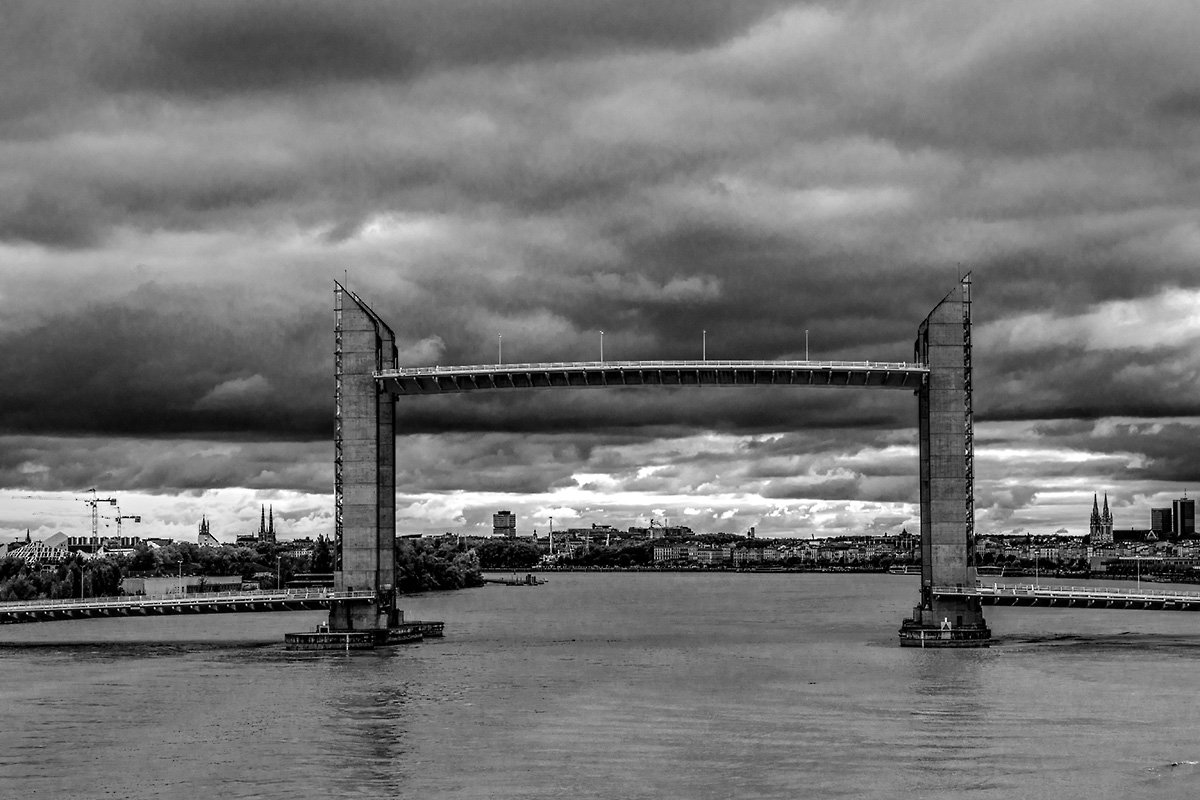
As we left Bordeaux, we sailed UNDER this bridge! Add a couple more decks (like on most new cruise ships) and it would not have been possible.

Pastoral solitude within the city limits of Santander, Spain.

Confidence building for young girls -- an urban zipline.

Next stop, Gijon, Spain, from which we visited two towns of at least two centuries' antiquity: Oviedo and Aviles, from which this and the following nineteen photos derive. Here, a statue honoring a monk in front of the faculty door for the local department of psychology in Oviedo.

Oviedo HDR

Oviedo HDR

Oviedo HDR

Oviedo HDR. I think this is one of the best of my photos from the trip.

Oviedo HDR

Sculptures in Oviedo: La Lechera (The Milkmaid)

Sculptures in Oviedo: Vendedor de Pescado (Fish Seller)

Sculptures in Oviedo: La Pescadera (The fishwife)
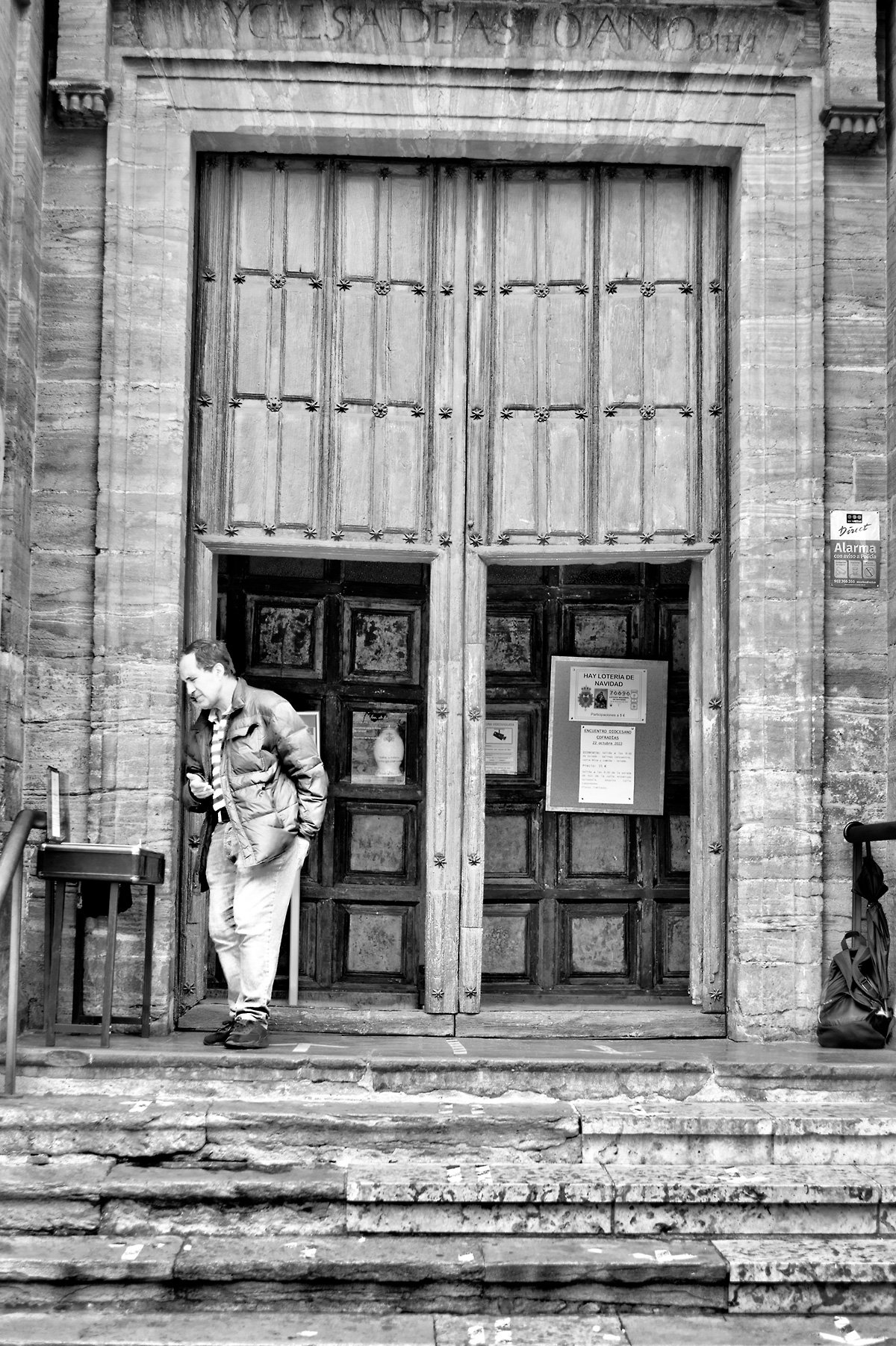
Oviedo HDR

Sculptures in Oviedo: The head and bonnet of La Regenta (The Regent), with the Metropolitan Cathedral of San Salvador of Oviedo in the background.
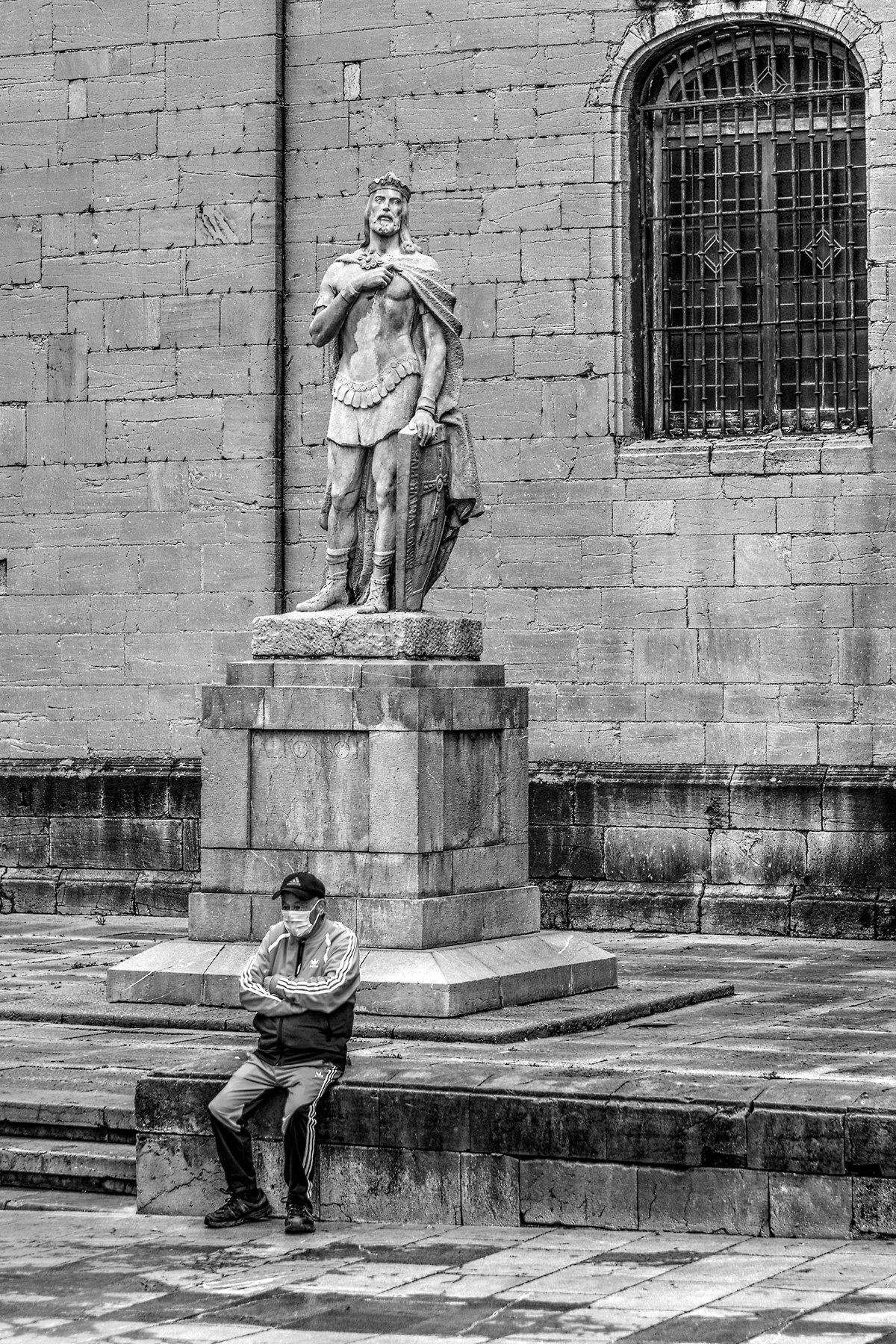
In Oviedo: tired tourist.
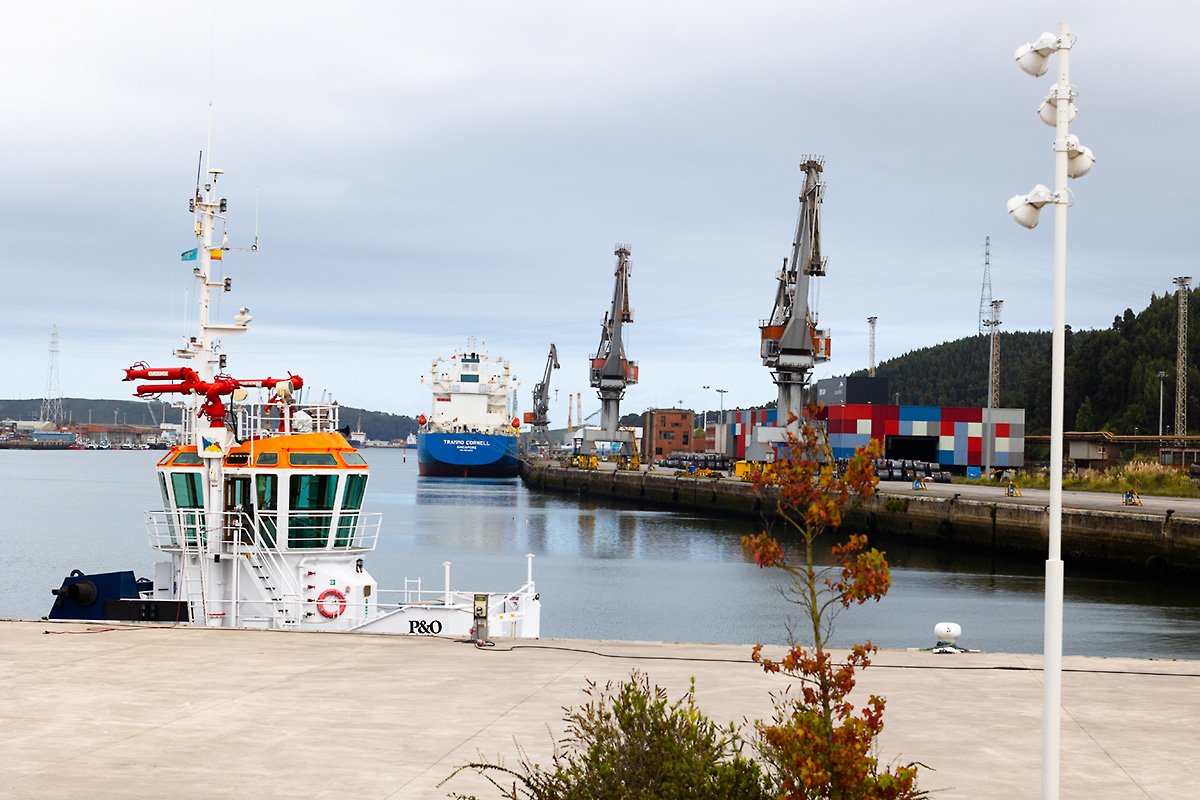
Aviles wharf and harbor.
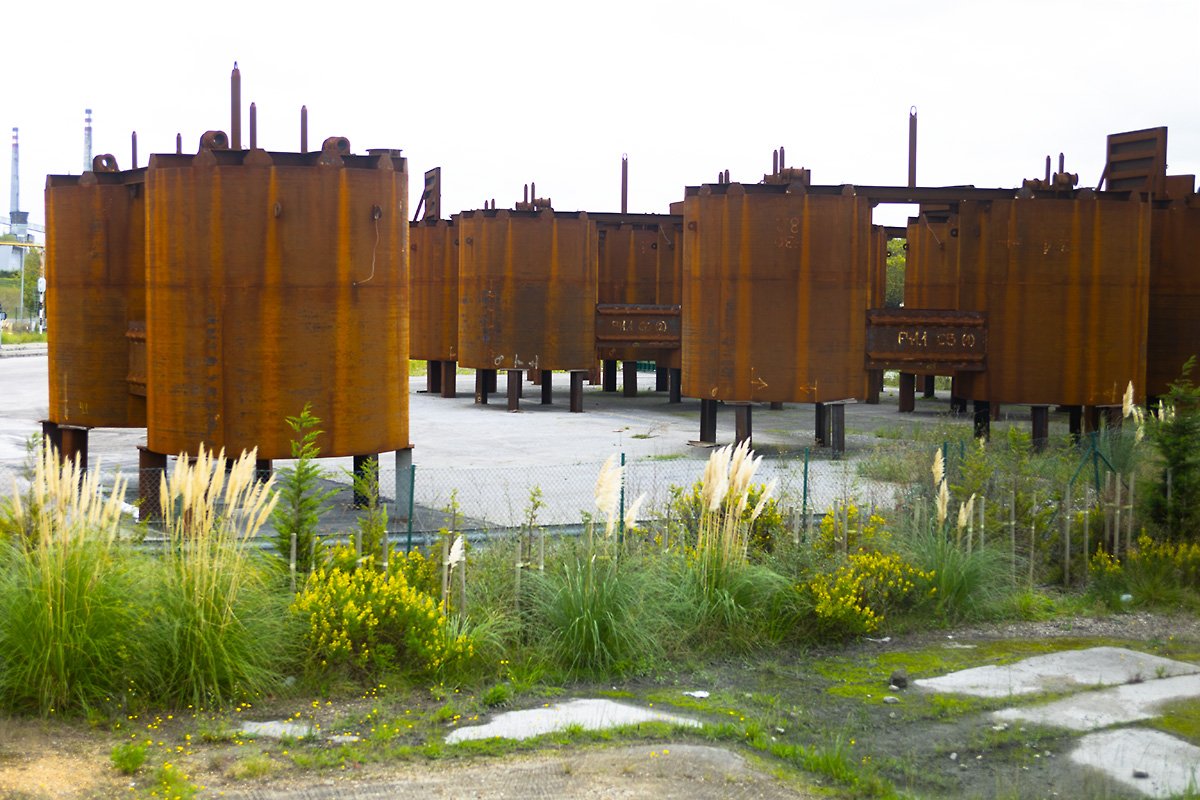
Aviles: empty and rusting storage tanks -- now actually rather artistic public art.

Statue of Pedro Menendez of Aviles, founder of St. Augustine, Florida, and first governor of Spanish Florida.

Statue of Eugenia Martínez Vallejo, "The Monster," who suffered a disorder that led to extreme overweight even as a child. She was brought to court because of her size at a young age.

Aviles HDR.

Iglesia de Santo Tomás de Canterbury ("The Church of Saint Thomas of Canterbury"). HDR. Located in the center of Aviles, this is a church, not a cathedral. The interior (next two frames) is stunning.

Interior of Iglesia de Santo Tomás de Canterbury (HDR). I sometimes wonder how religious iconography draws me to it photographically, given that I am a non-believer. This is a beautiful example of religious art on a smaller, non-cathedral scale.

Iglesia de Santo Tomás de Canterbury (HDR). More religious art, at the side of the church, in a bas relief style.

Afurada, Portugal, across the Douro River (famed in annals of Vintage Port) from Oporto itself. What was she waiting for?

Oporto, Portugal. We were on an excursion to a "Fishing Village" (Afurada, Portugal, adjacent to Oporto), which turned out to be a near total disappointment (except for the midday meal of grilled sardines). None of the photos reflected the "fishing" aspect of the area, except perhaps the last one. Here, it had begun to rain lightly, so this mother and daughter sought refuge under part of the playground.

A restaurant in Afurada, Casa do Pescador, where I wish we had dined -- specializing in seafood. We were literally within a stone's throw of the waterfront and fishing boats, but our guide neglected to take us there.

Afurada. You've got to admire a neighborhood where a household keeps street-cleaning implements right by the front door.

Two men, possibly fishermen, in Afurada.